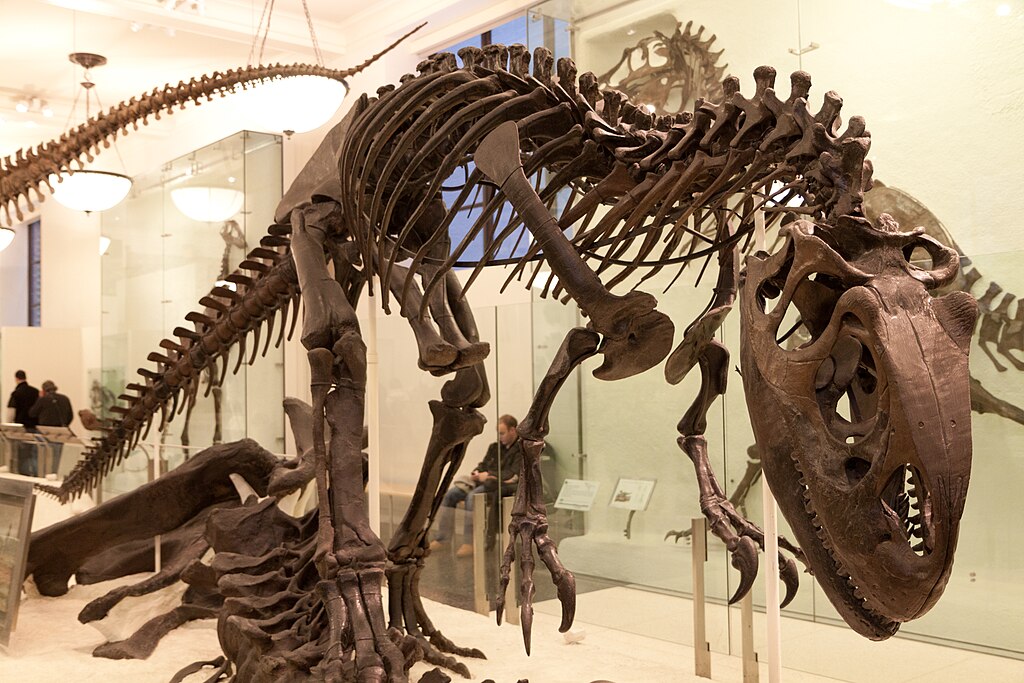The allure of dinosaurs transcends generations, captivating both children and adults with their prehistoric majesty. Across the United States, world-class museums and exhibitions bring these ancient creatures to life through impressive fossil collections, interactive displays, and cutting-edge technology. From complete T. rex skeletons to hands-on paleontological dig sites, these destinations offer visitors a chance to step back in time and experience the wonder of the Mesozoic Era. Whether you’re a serious paleontology enthusiast or simply fascinated by these extraordinary animals that once ruled our planet, these top dinosaur exhibits across America represent destinations worthy of a special journey.
American Museum of Natural History, New York City

The American Museum of Natural History in New York City houses one of the world’s most impressive dinosaur collections across its two dedicated dinosaur halls. The centerpiece of the fossil exhibits is the colossal Titanosaur, a 122-foot-long plant-eater that barely fits within the exhibition space, with its neck extending out toward the elevator banks. Equally impressive is the museum’s mounted Tyrannosaurus rex, displayed in a dynamic hunting pose that reflects current scientific understanding of how these predators moved. The museum’s displays are continuously updated to reflect the latest paleontological research, making it a perpetually evolving educational experience. Visitors particularly appreciate the thoughtful curation that contextualizes dinosaurs within their prehistoric ecosystems, complete with contemporary plant life and other animals from their periods.
The Field Museum, Chicago

Chicago’s Field Museum is home to SUE, the largest, most complete, and best-preserved Tyrannosaurus rex specimen ever discovered. Standing 13 feet tall at the hip and measuring 40 feet from nose to tail, SUE represents one of paleontology’s most significant finds and has helped scientists better understand this iconic predator. In 2018, SUE was moved to a dedicated exhibition space that recreates the Late Cretaceous environment in which this magnificent creature lived. The museum also features the Evolving Planet exhibition, which guides visitors through 4 billion years of life on Earth with particular emphasis on dinosaur evolution and extinction. Interactive elements throughout allow visitors to experience how paleontologists work, from fossil excavation techniques to the latest technological methods used to study prehistoric life.
Natural History Museum of Los Angeles County

The Natural History Museum of Los Angeles County boasts the spectacular Dinosaur Hall, a 14,000-square-foot exhibition space featuring more than 300 real fossils and 20 complete dinosaur and sea creature skeletons. Among its most impressive specimens is a growth series of Tyrannosaurus rex, showing the same species at different life stages—from a young juvenile to a teen to a full-grown adult. This unique display helps visitors understand how these animals developed and changed throughout their lifespans. The museum also features a remarkable Triceratops with the most complete skull ever found, displayed alongside compelling exhibits that explain how dinosaurs lived, moved, and behaved based on current scientific evidence. Visitors can also observe a working paleontology laboratory where scientists prepare real fossils for study and display.
Museum of the Rockies, Bozeman, Montana

Located in Bozeman, Montana, the Museum of the Rockies houses one of the largest collections of dinosaur fossils in the United States, with particular emphasis on specimens found in the Northern Rockies region. The museum benefits from the direct involvement of renowned paleontologist Jack Horner, whose work partly inspired the “Jurassic Park” series and who served as the museum’s curator of paleontology for many years. Its Siebel Dinosaur Complex features an extraordinary collection of Tyrannosaurus rex specimens, including the largest T. rex skull ever discovered. The museum is particularly noted for its extensive collection of Maiasaura fossils, which have provided groundbreaking insights into dinosaur parenting behavior and led to the discovery that some dinosaur species cared for their young in nests. Visitors can also observe the “Hall of Horns and Teeth,” showcasing the diversity of horned dinosaurs that once roamed Montana.
Carnegie Museum of Natural History, Pittsburgh

The Carnegie Museum of Natural History in Pittsburgh houses one of the premier dinosaur collections in America, including the first specimen of Diplodocus ever discovered, now known as “Diplodocus carnegii” in honor of the museum’s founder, Andrew Carnegie. ‘s Dinosaurs in Their Time exhibition presents fossils in accurate reconstructions of their ancient environments, correctly positioned according to the latest scientific understanding. The museum is particularly renowned for housing the holotype specimens (the exemplars upon which species definitions are based) of several famous dinosaur species, including Tyrannosaurus rex, Apatosaurus louisae, and Diplodocus carnegii. Visitors especially appreciate the museum’s “PaleoLab,” where they can watch paleontologists and preparators working on real fossils through large viewing windows, providing an authentic glimpse into the scientific process behind the exhibits.
Royal Tyrrell Museum of Palaeontology, Alberta, Canada

While technically in Canada, the Royal Tyrrell Museum in Alberta deserves mention for American travelers as it’s within driving distance of the northern U.S. border and represents one of North America’s premier dinosaur destinations. Located in the Alberta Badlands, one of the richest dinosaur fossil locations in the world, the museum houses over 130,000 fossils and features more than 40 dinosaur skeletons on display in its chronologically organized galleries. The star attraction is “Black Beauty,” one of the most complete Tyrannosaurus rex skeletons in the world, named for its distinctive dark-colored fossilized bones. The museum offers unparalleled educational programming, including guided hikes through actual fossil quarries where visitors can observe paleontological work in progress. Its location in Drumheller, at the heart of Alberta’s Dinosaur Provincial Park (a UNESCO World Heritage Site), allows visitors to extend their dinosaur experience into the surrounding landscape, where many significant fossils have been discovered.
Dinosaur National Monument, Colorado/Utah

Spanning the border between Colorado and Utah, Dinosaur National Monument offers a unique experience among dinosaur exhibits because visitors can observe fossils in situ—still embedded in the rock where they were discovered. The monument’s Quarry Exhibit Hall is built around a cliff face containing approximately 1,500 dinosaur bones, including specimens of Allosaurus, Apatosaurus, Camarasaurus, Diplodocus, and Stegosaurus from the late Jurassic period. This extraordinary “wall of bones” represents one of the most concentrated and well-preserved dinosaur fossil deposits ever discovered. Beyond just viewing the fossils, visitors can touch real 149-million-year-old dinosaur remains, creating a tangible connection to these ancient creatures. The monument also offers stunning hiking trails through landscapes where dinosaurs once roamed, combining natural beauty with prehistoric history in a way few other destinations can match.
Wyoming Dinosaur Center, Thermopolis, Wyoming
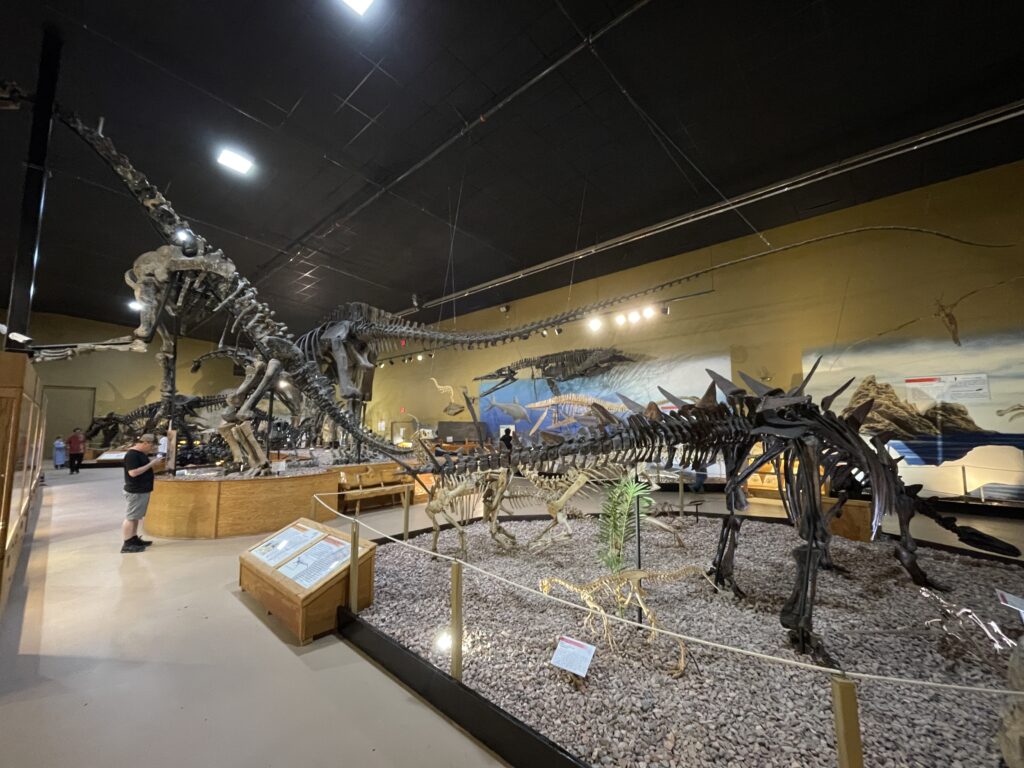
The Wyoming Dinosaur Center offers one of the most hands-on dinosaur experiences in America through its “Dig for a Day” program, where visitors can participate in actual paleontological excavations at active dig sites. Located in a region rich with dinosaur fossils, the center houses over 30 mounted dinosaur skeletons and hundreds of displays and dioramas across its 12,000 square feet of exhibition space. The star attraction is “Jimbo,” a near-complete Supersaurus specimen measuring over 106 feet long, making it one of the largest dinosaur skeletons on display anywhere in the world. The center’s working preparation laboratory allows visitors to watch as fossils are cleaned and prepared for scientific study and display. Its educational programming is particularly impressive, with options ranging from casual one-day experiences to intensive multi-day paleontology classes suitable for both children and adults.
The Smithsonian National Museum of Natural History, Washington, D.C.
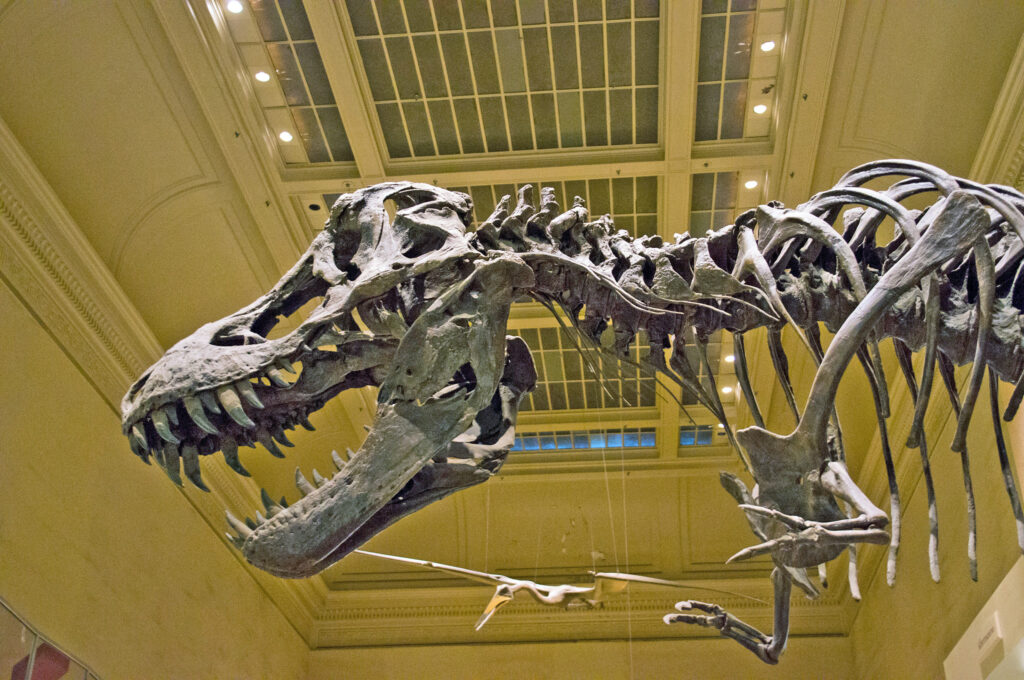
Following an extensive $110 million renovation completed in 2019, the Smithsonian’s David H. Koch Hall of Fossils – Deep Time presents one of the most modern and scientifically up-to-date dinosaur exhibits in the world. The hall traces 3.7 billion years of life on Earth, with dinosaurs featured prominently within this broader context of evolution and ecological change. The centerpiece is the museum’s T. rex, displayed in a scientifically accurate pose as it pulls apart a Triceratops carcass—a dynamic scene based on current paleontological evidence. What sets this exhibit apart is its strong focus on climate change, using dinosaurs and other extinct species to illustrate how Earth’s ecosystems have transformed over time due to various factors, including asteroid impacts, volcanic activity, and shifting climates. Interactive digital displays allow visitors to explore concepts like continental drift, extinction events, and the process of fossilization through engaging, hands-on activities.
Houston Museum of Natural Science, Texas
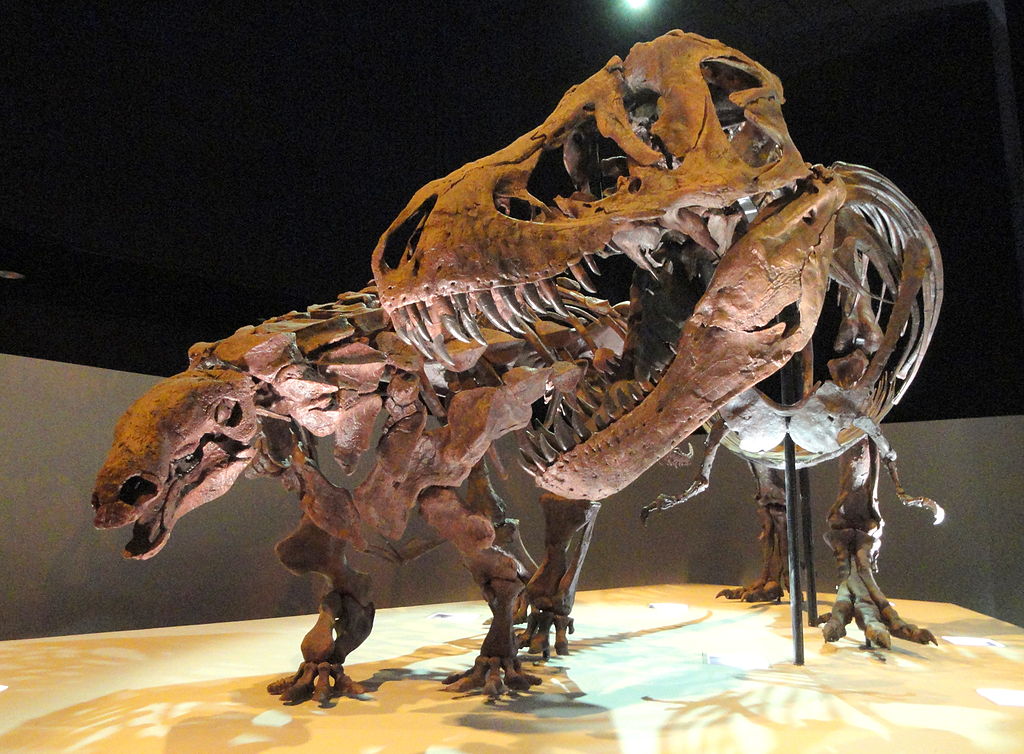
The Morian Hall of Paleontology at the Houston Museum of Natural Science takes a distinctive approach to dinosaur display by presenting skeletons in dynamic, action-oriented poses that depict predator-prey relationships and other behaviors. Rather than displaying static poses, visitors witness prehistoric scenes frozen in time: a Tyrannosaurus rex pursuing prey, velociraptors attacking a Protoceratops, and towering sauropods defended by Jurassic predators. The 30,000-square-foot exhibition hall progresses chronologically from the Paleozoic Era through the Cenozoic, with the extensive Mesozoic section featuring dozens of complete dinosaur skeletons. Particularly notable is the museum’s Triceratops and its exceptionally rare and complete Quetzalcoatlus northropi, one of the largest flying creatures ever discovered, with a wingspan of over 30 feet. The museum also houses numerous touchable specimens and fossilized dinosaur skin impressions that allow visitors to connect physically with these ancient animals.
The Academy of Natural Sciences of Drexel University, Philadelphia

As America’s oldest natural history museum (founded in 1812), the Academy of Natural Sciences in Philadelphia holds a special place in the history of American paleontology. It was here in 1858 that the first nearly complete dinosaur skeleton found in the United States—Hadrosaurus foulkii—was put on display, representing the first mounted dinosaur skeleton exhibited anywhere in the world. Today, the museum’s Dinosaur Hall continues this pioneering tradition with an impressive collection that includes a Tyrannosaurus rex, Avaceratops, and the massive plant-eater Diplodocus. The museum offers a unique historical perspective on how our understanding of dinosaurs has evolved, with displays explaining how scientific interpretations of these creatures have changed since the 19th century. Visitors particularly enjoy the “Big Dig” simulation, where children can experience what it’s like to uncover dinosaur fossils, complete with realistic replicas buried in a designated excavation area.
The Perot Museum of Nature and Science, Dallas
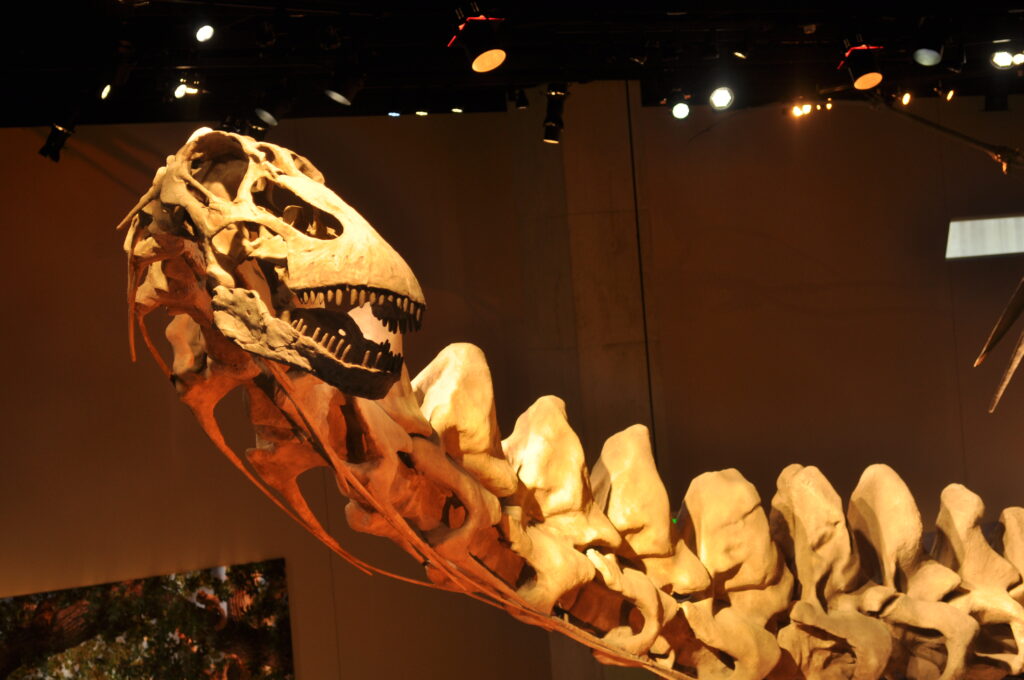
The T. Boone Pickens Life Then and Now Hall at Dallas’s Perot Museum showcases an impressive collection of dinosaur specimens native to Texas and the southwestern United States, highlighting the region’s rich paleontological heritage. The hall features Alamosaurus, a massive titanosaur discovered in Big Bend National Park, alongside dramatic displays of Tyrannosaurus rex and Triceratops engaged in an eternal face-off. What distinguishes this museum is its innovative use of technology, including augmented reality experiences that bring dinosaur skeletons to life before visitors’ eyes, showing how the creatures would have moved, hunted, and behaved millions of years ago. The museum also houses a glass-enclosed paleontology lab where visitors can observe scientists working with real fossils. Children particularly enjoy the interactive “Becoming a Paleontologist” areas where they can practice fossil identification, dinosaur classification, and even experience simulated dinosaur excavations.
Planning Your Dinosaur Road Trip Experience

For dinosaur enthusiasts looking to maximize their prehistoric adventures, planning a dedicated dinosaur road trip can offer an immersive and comprehensive experience. The famous “Dinosaur Diamond Prehistoric Highway” is a designated scenic byway that loops through Colorado and Utah, connecting major dinosaur attractions like Dinosaur National Monument, the Utah Field House of Natural History, and the Museum of Western Colorado’s Dinosaur Journey Museum. Those focused on the northern tier might consider the “Montana Dinosaur Trail,” which links multiple museums and dig sites across the state, including the Museum of the Rockies and the Fort Peck Interpretive Center. When planning visits, consider scheduling around special events like museum-led fossil hunting expeditions, which are typically offered during summer months. Many institutions also offer behind-the-scenes tours for an additional fee, providing access to research collections not normally open to the public and opportunities to speak directly with paleontologists about their work.
Discover the Fascination Behind America’s Top Dinosaur Exhibits

The enduring appeal of dinosaurs lies in their ability to inspire wonder while teaching us about Earth’s distant past. These premier exhibits across the United States offer far more than just impressive skeletal displays—they provide windows into lost worlds, scientific insights into evolution and extinction, and hands-on experiences that transform visitors from passive observers into active participants in paleontological discovery. Whether you’re planning a dedicated dinosaur road trip or incorporating these destinations into broader travel plans, these exceptional exhibits promise unforgettable encounters with the magnificent creatures that ruled our planet for more than 160 million years. As our scientific understanding continues to evolve, these museums remain at the forefront of dinosaur education, making them worthy destinations for travelers seeking both entertainment and enlightenment.

